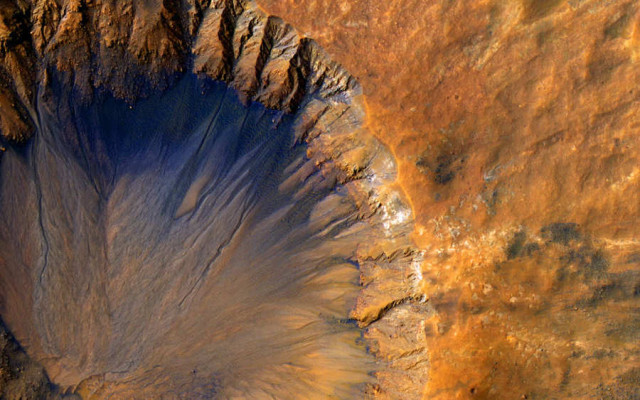This impressive closeup image captured from (HiRISE) camera, of a “fresh” (on a geological scale, though quite old on a human scale) impact crater in the Sirenum Fossae region of Mars, on March 30, 2015.
This impact crater appears by High Resolution Imaging Science Experiment (HiRISE) camera aboard NASA’s Mars Reconnaissance Orbiter, relatively recent as it has a sharp rim and well-preserved ejecta.
The steep inner slopes are carved by gullies and include possible recurring slope lineae on the equator-facing slopes. Fresh craters often have steep, active slopes, so the HiRISE team is monitoring this crater for changes over time. The bedrock lithology is also diverse. The crater is a little more than 1-kilometer wide.
The University of Arizona, Tucson, operates HiRISE, which was built by Ball Aerospace & Technologies Corp., Boulder, Colorado.
Image Credit: NASA/JPL/University of Arizona
Caption: Alfred McEwen
source NASA






Leave A Comment